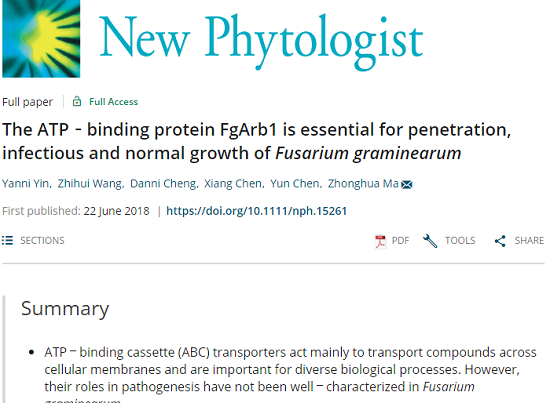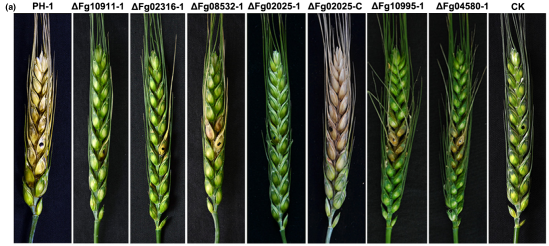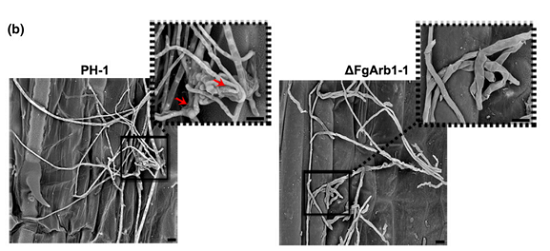RESEARCH
Current location:homepage RESEARCH PUBLICATIONS
New Phytologist:The ATP-binding protein FgArb1 is essential for penetration, infectious and normal growth of Fusarium graminearum
DATE:2018-07-15
The ATP-binding protein FgArb1 is essential for penetration, infectious and normal growth of Fusarium graminearum
ATP-binding cassette (ABC) transporters mainly act to transport compounds across cellular membranes and are important for diverse biological processes. However, their roles in fungal pathogenesis have not been well characterized. The fungal pathogen F. graminearum causes Fusarium head blight (FHB) on wheat and other small grain crops, resulting in substantial yield losses and mycotoxin contamination worldwide. The Fusarium research team led by Dr. Zhonghua Ma in the Institute of Biotechnology, Zhejiang University has discovered a novel regulatory mechanism of ABC protein Arb1 in fungal pathogenesis. They reported their findings in the journal of New Phytologist on June 23.
The Fusarium research team characterized the functions of 60F. graminearum ABC proteins and found that the ABC protein FgArb1 regulates normal growth and importantly is essential for pathogenicity. FgArb1 interacts with the mitogen-activated protein kinase (MAPK) kinase FgSte7, and partially modulates plant penetration by regulating the phosphorylation of FgGpmk1 (the downstream kinase of FgSte7). The FgArb1 mutant exhibited dramatically reduced infective growth within wounded host tissues, likely resulting from its increased sensitivity to oxidative stresses, defective cell wall integrity, and reduced deoxynivalenol (DON) production. FgArb1 also is important for the production of sexual and asexual spores that are important propagates of F. graminearum. In addition, FgArb1 is involved in the regulation of protein biosynthesis through impeding nuclear export of small ribosomal subunit. Finally, acetylation modification at site K28, K65, K341 and K525 in FgArb1 is required for its biological functions.
Dr. Yanni Yin is the first author of this article. This work was supported by funds from the National Natural Science Fund for Distinguished Young Scholar (31525020), National Science Foundation (31571945), and China Agriculture Research System (CARS-



